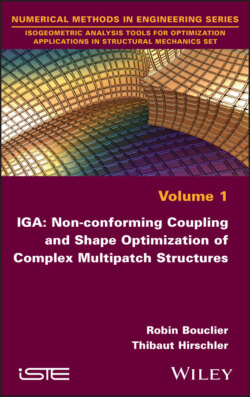Читать книгу IGA - Robin Bouclier - Страница 22
1.2.4. Spline-based finite element analysis: isogeometric principle 1.2.4.1. General idea
ОглавлениеThe main idea behind IGA is to use the spline-based parameterizations discussed above to build the approximation subspaces when applying Galerkin’s method for solving partial differential equations (Hughes et al. 2005; Cottrell et al. 2009). In this framework, the method can be viewed as a generalization of the FEM that considers smooth and higher-degree functions to replace typical Lagrange polynomials in the computations. Within this work, we recall that only NURBS (which constitute the most commonly used technology in CAD) and simpler B-splines are considered. In the end, this is the only major difference with the classical FEM, from an analytical point of view. IGA relies on the same variational formulations as standard FEM. When invoking the isoparametric element concept, the spline basis turns these weak forms into systems of algebraic equations. In solid mechanics, it means that the displacement field is approximated as:
[1.32]
where Ri are the spline basis functions originated from the considered geometric model of the structure (see equation [1.23]). With this numerical approximation in hand, the principle of virtual work gives the following well-known linear system:
[1.33]
where K is the so-called stiffness matrix, u is the displacement vector (vector collecting the degrees of freedom (DOF)) and f is the force vector. We do not provide more information here on the expressions of these operators. In the rest of this chapter, these quantities will either be the very classic ones (context of linear elasticity, for example), or detailed in more specific situations (e.g. context of thin shell analysis).
